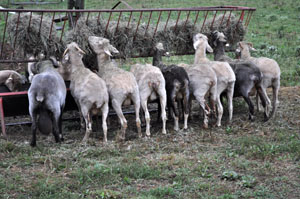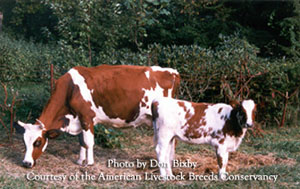Posted by · Leave a Comment
I mentioned in an earlier post that I took the kids to an antique tractor show. One of the displays was an antique cider press…a LARGE, antique cider press. I spoke with the woman handing out the samples of cider. She said her husband came home telling her he thought the dusty old machine he spied at a farm, where he occasionally works, was a press and asked the owners if he could clean it up and bring it to the show.
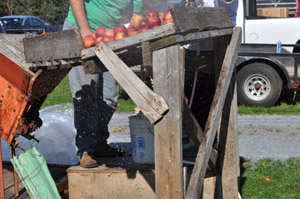 It was really something to behold. Buckets of apples were dumped and washed on the tray, then gently guided into one of the holders which made its way up the conveyor. They were milled at the top and the scratting collected until a handle released it onto the thick cloth lining a wood tray. Each tray’s cloth was folded over before another tray was placed on top. When a handful of trays had been stacked, the apples were pressed and the cider flowed!
It was really something to behold. Buckets of apples were dumped and washed on the tray, then gently guided into one of the holders which made its way up the conveyor. They were milled at the top and the scratting collected until a handle released it onto the thick cloth lining a wood tray. Each tray’s cloth was folded over before another tray was placed on top. When a handful of trays had been stacked, the apples were pressed and the cider flowed!
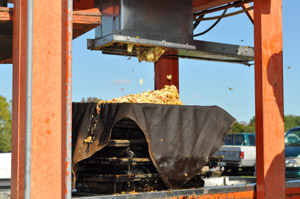
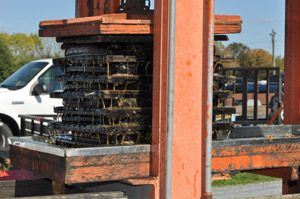 People (as well as bees) gathered to watch the process and, of course, have a taste. Imagine what this would have meant to a community hundreds of years ago…celebrating a summer’s worth of hard work, welcoming fall, and a delicious reason to gather.
People (as well as bees) gathered to watch the process and, of course, have a taste. Imagine what this would have meant to a community hundreds of years ago…celebrating a summer’s worth of hard work, welcoming fall, and a delicious reason to gather.
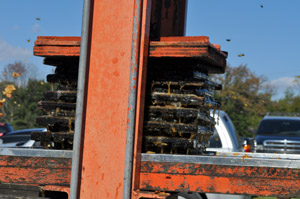
Comments Off on Blog Post About Our Cider-making Webisode

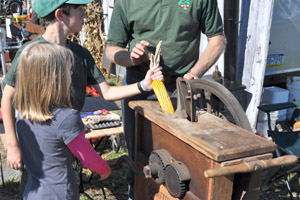 As we strolled past a corn sheller, the gentleman operating it pointed to Nathaniel and said, “Young man, your mom wants to make corn bread!!” Nathaniel looked up, quizzingly, as the man repeated, “she needs your help—go on out and gather a bushel of corn.”
As we strolled past a corn sheller, the gentleman operating it pointed to Nathaniel and said, “Young man, your mom wants to make corn bread!!” Nathaniel looked up, quizzingly, as the man repeated, “she needs your help—go on out and gather a bushel of corn.”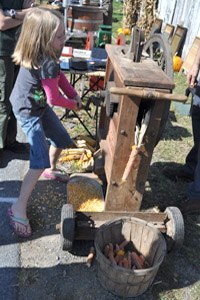
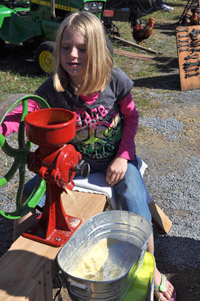 You can imagine they were both smiling by now as Natalie cranked the wheel and Nathaniel added the corn. Once the mill chewed the kernels off, they began spilling out the chute.
You can imagine they were both smiling by now as Natalie cranked the wheel and Nathaniel added the corn. Once the mill chewed the kernels off, they began spilling out the chute.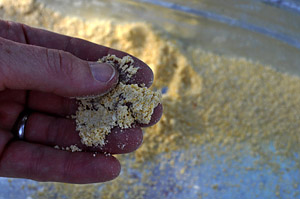 So they gathered the kernels and put them down the mill chute and began to crank. The bowl caught the light, yellow, cracked and milled corn.
So they gathered the kernels and put them down the mill chute and began to crank. The bowl caught the light, yellow, cracked and milled corn.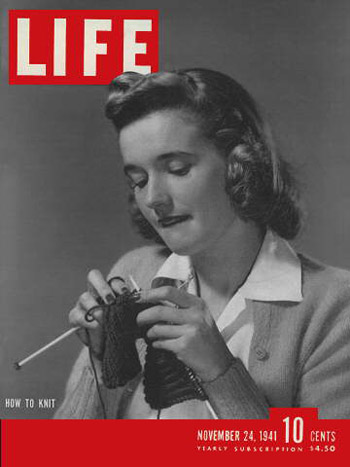 It’s November, 1941.
It’s November, 1941.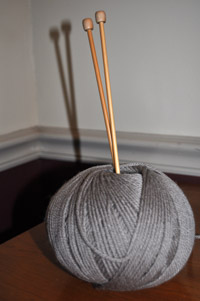 So, you see, knitting, most definitely, has a special place in our history. Whether you knit for fun or for “a purpose,” it’s a skill well worth pursuing.
So, you see, knitting, most definitely, has a special place in our history. Whether you knit for fun or for “a purpose,” it’s a skill well worth pursuing.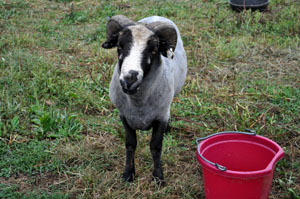 Baw Blue, our devilishly handsome Navajo-Churro ram will return to his home farm in a few days. We heeded his owner’s warning and gave him full and free access to the girls. (Translation: we did not venture into the pasture while he was here except for feeding and watering. Blue’s known to be quite territorial when it comes to his “girlfriends.”)
Baw Blue, our devilishly handsome Navajo-Churro ram will return to his home farm in a few days. We heeded his owner’s warning and gave him full and free access to the girls. (Translation: we did not venture into the pasture while he was here except for feeding and watering. Blue’s known to be quite territorial when it comes to his “girlfriends.”)